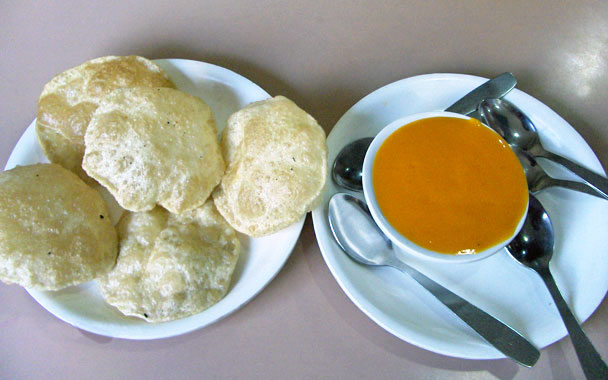
It’s that time of year again, when the sweet scent of mangoes fills the air. Every Indian bazaar is stacked with crates and crates them, and hungry Indians everywhere slice and slurp their way to mango ecstasy. This “king of fruits” comes in batches with musical names: Punjabi Chausas; Bangalore’s Badami and Bangloora varieties; Hyderabad’s Banganapalli and Roomani; Tamilnadu’s Neelam and Malgova; and, of course, Alphonsos from Pune in Maharashtra.
People’s mango preferences depend on mood, moment, and, not the least of all, oral health: Many older people hate the fibrous Neelam because its thick flesh tends to get stuck between their teeth, preferring instead the juicy Chausa or Daseri. Kids love the tart, slightly unripe-tasting Banganapalli, which they slice and dust with a sprinkle of salt and chili powder. The purists swear by Alphonsos, while those who like a bit more flesh and some juice go for the Malgova.
During mango season, one weird recipe that Indians gorge on is poori-aamras. Pooris are fried, puffy breads made from wheat flour; aamras literally means mango essence. All the simple recipe involves is beating the mango into pulp, and maybe adding a little milk, cream and cardamom—or sugar, or even some cumin powder to spice things up. But during peak mango season, all it really takes is fresh pulp with a dash of cardamom. Pop the aamras into the fridge. Serve it chilled with piping-hot poori. And you’ll have the Indian equivalent of, say, warm brownies and ice cream.





while Alphonso has been projected as the best mango variety, I think its just a marketing gimmick of a particular lobby. Fact is given the variety of mango India produces each of these is unique and best in their own way. Some will prefer Kesar others Langda. You just choose what is available to you and suits your taste buds!